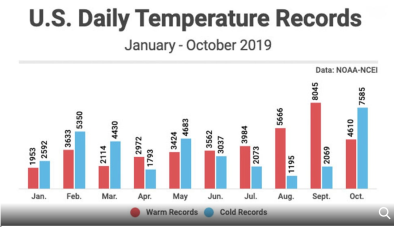Science Source
The North Atlantic Oscillation as a driver of rapid climate change in the Northern Hemisphere
- States that pronounced climate changes have occurred since the 1970s, including rapid loss of Arctic sea ice, large-scale warming and increased tropical storm activity in the Atlantic
- Anthropogenic radiative forcing is likely to have played a major role in these changes, but the relative influence of anthropogenic forcing and natural variability is not well established
- States that the above changes have also occurred during a period in which the North Atlantic Oscillation has shown marked multidecadal variations
- Investigates the role of the North Atlantic Oscillation in these rapid changes through its influence on the Atlantic meridional overturning circulation and ocean heat transport
- Uses climate models to show that observed multidecadal variations of the North Atlantic Oscillation can induce multidecadal variations in the Atlantic meridional overturning circulation and poleward ocean heat transport in the Atlantic, extending to the Arctic
- Results suggest that these variations have contributed to the rapid loss of Arctic sea ice, Northern Hemisphere warming, and changing Atlantic tropical storm activity, especially in the late 1990s and early 2000s
- Concludes that these multidecadal variations are superimposed on long-term anthropogenic forcing trends that are the dominant factor in long-term Arctic sea ice loss and hemispheric warming
Related Content
Headline

Nov 12, 2019 | The New York Times
The Arctic Plunge: From Feeling Like 92 to Freezing in a Day
Headline

Nov 6, 2019 | The Weather Channel
Despite More Than 4,000 Daily Cold Records in the Last Few Days, This Year Has Set More Warm Records Than Cold
Science Source
| Philosophical Transactions of the Royal Society A: Mathematical, Physical and Engineering Sciences
Evidence linking rapid Arctic warming to mid-latitude weather patterns
Jennifer Francis and Natasa Skific
Science Source
| Science
Atmospheric blocking as a traffic jam in the jet stream
Noboru Nakamura, Clare S. Y. Huang


